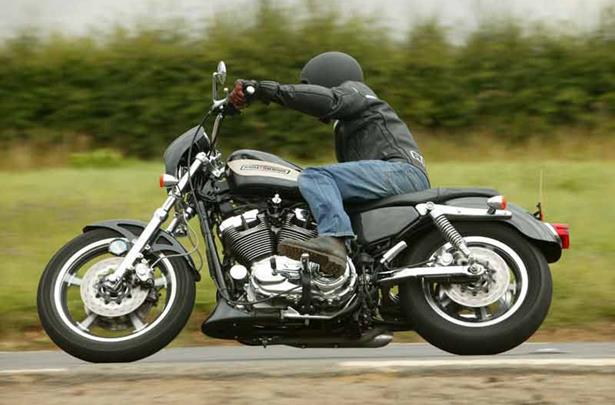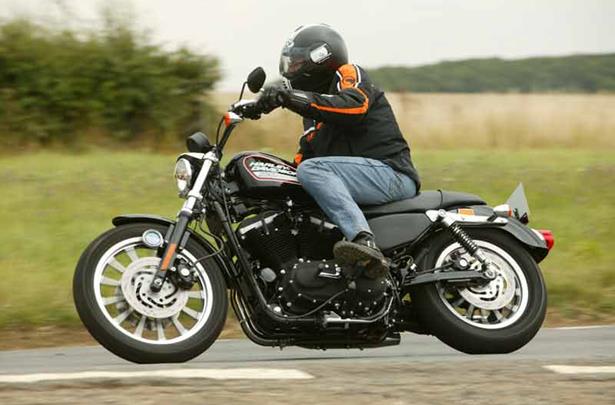How to Install Harley Exhaust Gaskets: Quick & Easy Guide
To install Harley exhaust gaskets, remove the old gaskets, clean the surface, and position the new gaskets onto the exhaust port. Tighten the exhaust flange nuts evenly to secure them in place.
Harley-Davidson motorcycles are renowned for their distinctive sound and performance, and maintaining their exhaust system is key to preserving these qualities. The replacement of exhaust gaskets is a critical maintenance task that ensures an airtight seal and optimal engine function.
Performing this task with precision is crucial for preventing exhaust leaks, which can lead to reduced performance and potential damage. This straightforward process involves a set of tools and basic mechanical aptitude and is a common task for both motorcycle enthusiasts and professional mechanics. By ensuring the gaskets are properly installed, riders can enjoy a smooth and powerful experience on the road.
Preparing For Exhaust Gasket Installation
Properly installing Harley exhaust gaskets is crucial to ensure a tight seal and prevent exhaust leaks, which can lead to decreased performance and potential engine damage. Installation must be done meticulously to maintain the integrity of your motorcycle’s exhaust system.
- New Harley exhaust gaskets
- Exhaust system service manual for your specific Harley model
- A set of socket wrenches and sockets
- Torque wrench to ensure proper tightening
- Penetrating oil for ease in removing old components
Initiate the process by reading the service manual closely to comprehend the specifics of your Harley model. Next, spray penetrating oil on the bolts of the current exhaust system to facilitate easier disassembly. Ensure you have cleaned the mounting surface on the cylinder head to prepare it for the new gasket. Taking these initial steps will pave the way for a smooth installation process.
Understanding Harley Exhaust Gaskets
Harley exhaust gaskets serve a critical function in the motorcycle’s exhaust system. They create a seal between different components to prevent exhaust leaks, which can lead to decreased performance and increased noise. Riders may choose from a range of gasket materials and designs, each suited to specific models and riding conditions. These materials include non-asbestos compositions, metal, and graphite composites, among others.
| Gasket Type | Material | Typical Use |
|---|---|---|
| Standard | Non-asbestos | Regular riding |
| Performance | Metal | High-performance conditions |
| Graphite | Graphite Composite | High-temperature resistance |
Recognizing the signs of worn-out gaskets is essential for maintaining an efficient exhaust system. Some indicators include increased exhaust noise, a noticeable smell of exhaust fumes, or a drop in engine performance. Visible signs such as sooty deposits or physical damage around the exhaust ports can also suggest gasket failure. Regular inspection and timely replacement of the exhaust gaskets are crucial to protect the engine and guarantee optimal motorcycle performance.
Steps To Remove Old Gaskets
Safety must always be a top priority during any maintenance work on a motorcycle. Ensure to wear protective gear, such as gloves and safety glasses. A well-ventilated area is crucial to avoid inhaling fumes, and keeping a fire extinguisher nearby is advisable.
Begin by coolly and securely propping the motorcycle to prevent any movement. Gradually disassemble the exhaust system, starting with the removal of the exhaust pipe. This could require loosening bolts and clamps that secure the pipe to the motorcycle’s body. Take care not to strip any screws or damage surrounding components.
Flawless surface preparation is integral to prevent leaks. After removing the old gasket, examine the gasket surface critically—any debris or residues left behind can impede the seal. A gentle but thorough cleaning with the appropriate tools and solvents ensures a smooth surface for installing the new exhaust gaskets.
Inspecting The Exhaust Port
Inspecting the exhaust port on your Harley is a critical step before installing new exhaust gaskets. Begin by checking for any signs of damage or irregularities such as cracks, warping, or the presence of old gasket material that can hinder a proper seal. It is important to thoroughly clean the exhaust port surface to ensure that the new gasket will fit snugly and provide an airtight connection.
Before the new gasket installation, assess the exhaust flanges and pipes to ensure they are free from deformities. A flat surface is essential for the gasket to seal correctly, so any bumps or dents must be addressed. During the preparation phase, gather all necessary tools and components, confirming their compatibility with your Harley model. This proactive approach will streamline the installation process and help prevent any mid-repair setbacks.
Selecting The Right Gaskets
Selecting the right gaskets for your Harley is crucial to ensure an airtight seal and optimal performance. Ensure you check the gasket’s compatibility with your specific Harley model before making a purchase, as using the wrong type could lead to leaks and potential engine damage.
Consider the debate of OEM versus aftermarket gaskets. OEM, or Original Equipment Manufacturer, gaskets are designed specifically for your motorcycle model, promising a precise fit and high quality. Aftermarket options, while often more affordable, vary in quality and fitment, necessitating thorough research to ascertain their reliability.
To choose quality gaskets, look for features such as premium materials and positive customer reviews. Seek recommendations from seasoned riders or trusted mechanics who have experience with aftermarket brands. Additionally, review the warranty provided, as this can be indicative of the manufacturer’s confidence in their product’s durability.
How To Install Harley Exhaust Gaskets Properly
Installing a new exhaust gasket on your Harley may seem daunting, but with the right tools and instructions, it’s a task you can complete with confidence. Begin by removing the existing gaskets and cleaning the surface area to make room for the new ones ensuring all residue is removed. Proceed by aligning the new gasket meticulously with the exhaust port. The gasket must fit snugly and evenly to prevent potential exhaust leaks.
Once in place, don’t rush to fit the exhaust pipe back on. Instead, double-check the positioning of the gasket, making sure it’s perfectly seated. Then, carefully reattach the exhaust pipe, tightening the bolts in a crisscross pattern to apply even pressure. This method aids in ensuring a good seal and prevents warping. After installation, it’s recommended to check the gaskets after a few rides as they may require a slight retightening once they’ve been heat-cycled.
Reattaching The Exhaust System
Upon completing the placement of new Harley exhaust gaskets, it is crucial to properly reattach the exhaust system. Begin by carefully aligning the exhaust pipes with the engine’s ports. This step ensures a smooth connection devoid of leaks. Once aligned, proceed to the bolting process. Gradually hand-tighten the bolts to secure the pipes, avoiding excessive force which could cause gasket damage.
Following the initial hand tightening, use a torque wrench for the final tightening sequence, adhering to the manufacturer’s specified torque settings. Ensuring that the bolts are evenly tightened will help maintain the exhaust system’s alignment and prevent pressure points that might compromise the integrity of the seals.
After completion, it is imperative to systematically inspect all alignments and fittings. The scrutiny should confirm that all components sit flush against the ports and that no gaps are present, which could lead to exhaust leaks, resulting in poor performance and potential engine damage.
Troubleshooting Common Issues
Dealing with leaks after installation often signifies that the exhaust gaskets may not be seated correctly. Should you encounter such leaks, it is crucial to immediately address this issue to prevent exhaust inefficiency or potential engine damage. Begin by inspecting the seal around the entire circumference of the gasket. Tighten the exhaust flange bolts in a cross-pattern sequence to ensure even pressure distribution.
To check for proper gasket seating, perform a thorough inspection after installing the gaskets and again after running the engine for a short period. Use a mechanic’s stethoscope or a carefully positioned ear to listen for signs of escaping gases around the head pipe and gasket area. Visual inspection for any signs of soot or exhaust residue can also indicate a leak.
Professional assistance should be considered if the issue persists after multiple attempts at tightening and reseating the gaskets. Certified technicians can diagnose and remedy hidden complications, ensuring that the exhaust system functions safely and efficiently. Never hesitate to seek help from a qualified mechanic for optimal motorcycle maintenance.
Frequently Asked Questions
What Tools Are Needed To Replace Exhaust Gaskets?
To replace Harley exhaust gaskets, you’ll need a socket set, wrenches, an exhaust spring puller, and new gaskets.
How Often Should Motorcycle Exhaust Gaskets Be Changed?
Motorcycle exhaust gaskets should be changed when they start leaking or during an exhaust system upgrade or replacement.
Can I Install New Harley Exhaust Gaskets Myself?
Yes, with basic mechanical skills and proper tools, you can install new Harley exhaust gaskets yourself.
What Are The Signs Of A Failing Exhaust Gasket?
Symptoms of a failing exhaust gasket include increased engine noise, exhaust leaks, and a noticeable decrease in engine performance.
Do Exhaust Gaskets Require Sealant During Installation?
Typically, Harley exhaust gaskets do not require sealant due to their design, but always follow the manufacturer’s recommendations.
Conclusion
Installing your Harley exhaust gaskets doesn’t have to be a daunting task. With the right tools and patience, you’ll revamp your ride’s performance successfully. Remember, a tight seal is crucial for optimal exhaust flow. Now, gear up and enjoy a smoother, more powerful journey on the open road with your Harley! Safe riding!

